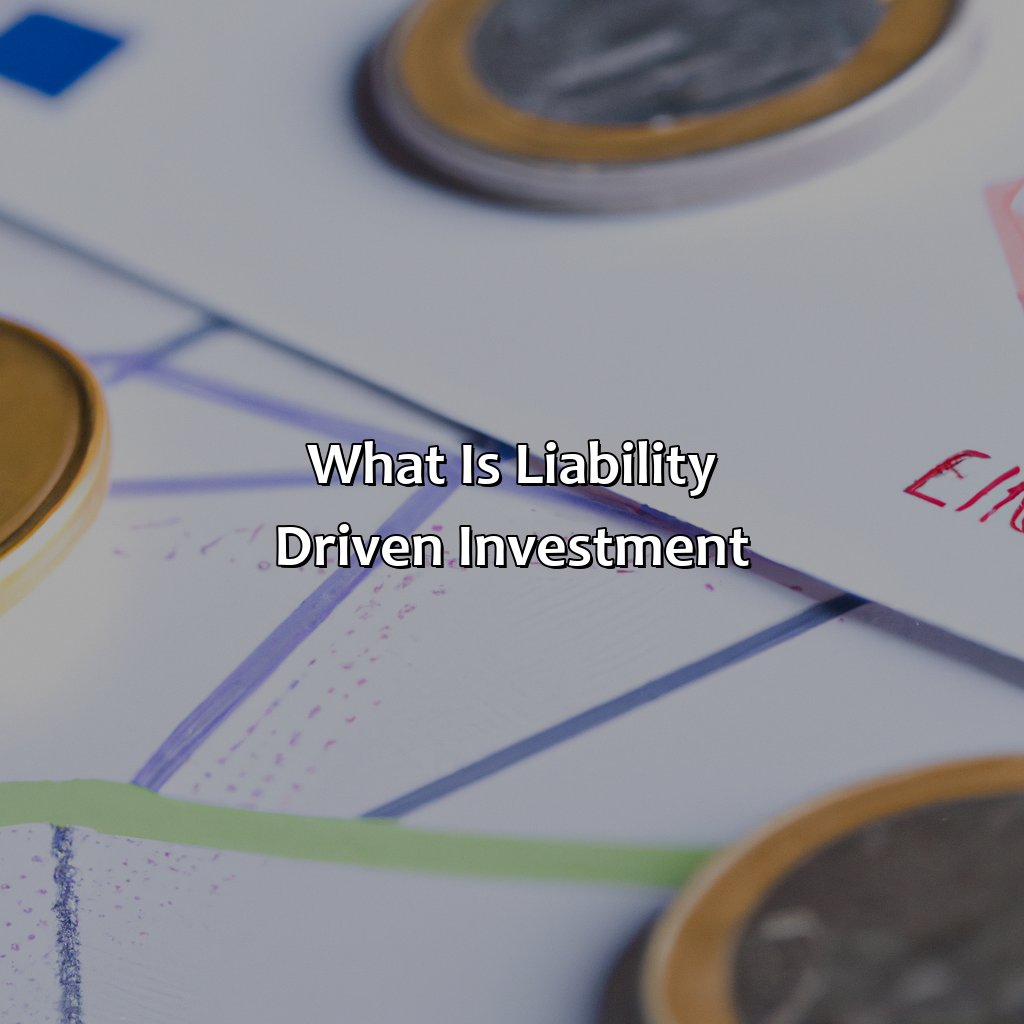What Is Liability Driven Investment?
Key Takeaway:
- Liability Driven Investment (LDI) is an investment strategy that aims to match assets with liabilities to meet funding targets and manage risk and volatility.
- The benefits of LDI include mitigating risk and volatility, matching assets with liabilities, and meeting funding targets to ensure long-term financial stability.
- LDI works by assessing liabilities through benchmarking and allocating assets based on the liability profile. There are three main LDI strategies: Full LDI, Partial LDI, and Cashflow-driven LDI.
As a savvy investor, you know that markets can be unpredictable. That’s why liability driven investing is worth looking into: to effectively reduce your risk and maximize your return on investment. Learn how LDI strategies can help you make the most of your money.
What is liability driven investment (LDI)?
Liability driven investment (LDI) is an investment strategy that aims to match future liabilities of an individual or an organization by investing in assets that have similar cash flows. LDI reduces the risks associated with the liabilities while generating sufficient returns to meet future obligations. By using LDI, investors can increase predictability and stability in their portfolio by aligning their assets with liabilities. LDI is widely used by pension funds and insurance companies to manage their liabilities effectively and ensure that future expenses are met without any shortfall.
LDI strategies involve identifying and measuring the cash flows needed to fund future liabilities and then investing in assets that generate cash flows matching these liabilities. The investments can include bonds, swaps, and other financial products that have a predictable stream of cash flows. The LDI approach typically involves a ‘glide path’ that adjusts the asset allocation of the portfolio as the liabilities and the time horizon change.
LDI strategies can vary based on the unique requirements and risk tolerance of an investor. LDI may involve investing in long-term bonds, which offer predictable cash flows, or investing in inflation-linked securities to protect against inflation risk. Successful LDI implementation requires investor discipline, risk management, and effective communication with stakeholders.
According to the consulting firm, LCP, by the end of 2020, almost 50% of UK defined benefit pension schemes have adopted LDI strategies to help match their liabilities and reduce the risks associated with funding their pension schemes.
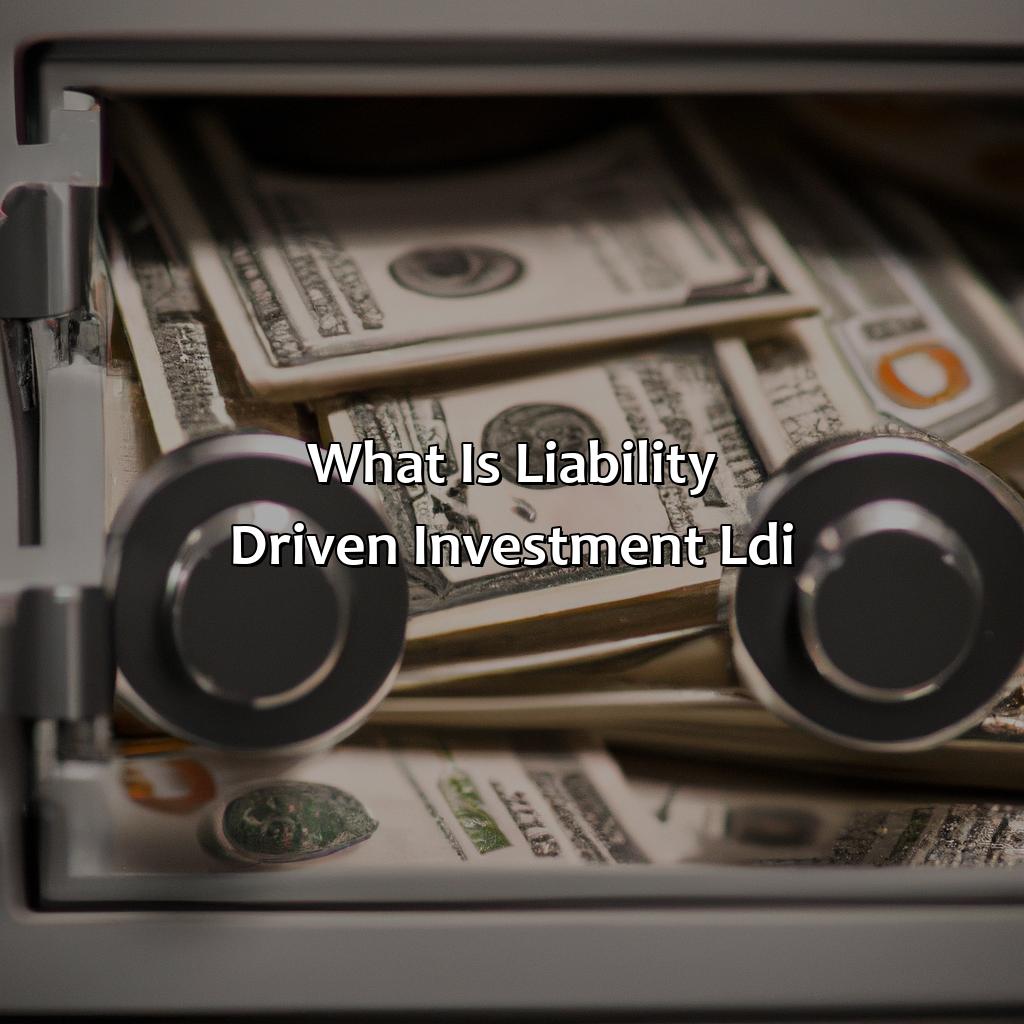
Image credits: retiregenz.com by Adam Arnold
Benefits of LDI
To grasp the advantages of LDI, concentrate on reducing danger and unsteadiness. Matching resources and liabilities, and reaching funding objectives. With these objectives met, LDI can give a durable monetary future for yourself and your organization.
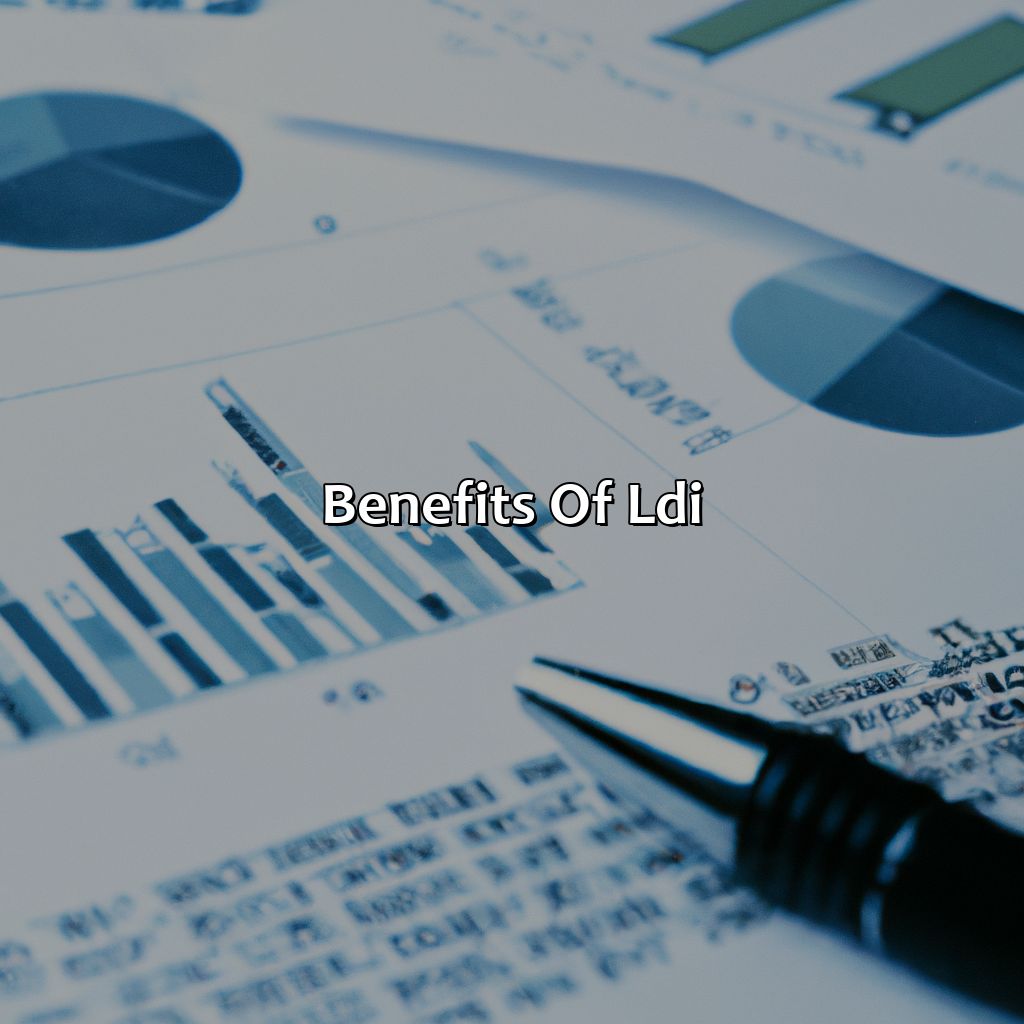
Image credits: retiregenz.com by Joel Woodhock
Mitigating risk and volatility
Achieving portfolio stability while navigating market challenges through strategic investment planning is critical for investors. Implementing a liability-driven investment (LDI) strategy can mitigate the volatility risk of liabilities presented to pension plan sponsors. By matching cash flows with securities and using derivatives, LDI strives to minimize shortfall and maximize the value of investments.
Implementing an LDI framework could provide organizations with tailor-made solutions that help them manage risk efficiently. The practice of tailoring portfolios to meet specific long-term objectives enables organizations to focus on meeting their mandatory payout obligations. In turn, this reduces financial statement volatility while increasing funding flexibility.
Notably, applying LDI’s core principles necessitates sophisticated asset-liability modeling and sufficient access to fixed-income bond markets. It will be difficult for small funds with less-diverse portfolios and limited liquidity demand to achieve practical LDI execution, particularly given volatile market conditions.
Pro Tip: Ensure regular communication between beneficiaries, consultants and other key stakeholders throughout the management of your organization’s LDI plan for effective implementation and management.
Matching assets and liabilities is like finding the perfect match on a dating app, except instead of love, you’re looking for financial stability.
Matching assets and liabilities
To ensure the alignment of investments with future obligations, Matching assets and liabilities run parallel. Below is a table that gives an in-depth insight into this concept.
| Assets | Liabilities |
|---|---|
| Stocks | Pension payments |
| Bonds | Insurance claims |
| Real estate | Annuity payments |
| Commodities | Contractual repayments |
This method ensures that risks are managed efficiently and helps to avoid any unexpected financial shortfalls. The matching assets and liabilities approach is widely used, especially by institutional investors.
It’s important to note that the process involves a thorough evaluation of the investment climate to analyze emerging market trends. Investing solely in low-risk assets might fail to keep pace with inflation and result in lesser returns than anticipated.
One suggestion is diversification across various asset classes, which is crucial towards managing risk and providing stability on returns. It’s also essential to stay updated on changes in the broader economy, global politics, geopolitical developments, and demographic shifts at all times.
Investors should evaluate their long-term obligations before establishing an LDI program framework. Mapping them appropriately becomes crucial for developing a sound and robust plan with outcomes aligned with long-term obligations.
Finally, meeting funding targets is like finding a needle in a haystack, but with LDI it’s more like using a metal detector.
Meeting funding targets
With LDI, investors can manage risks to meet their funding needs whilst carefully balancing the risks they take. LDI strategies involve matching assets and liabilities over time horizons using derivatives like swaps and options, a strategy that helps investors minimize mismatch risk when the liabilities come due. This ultimately gives them confidence that they will achieve their financial objectives without sudden shocks to their investments but in a sustainable manner.
What sets LDI apart is its focus on containing risk within defined parameters while still allowing for variations in return over time. Consequently, it minimizes investment losses during market downturns and balances long-term goals against short-term variability in investment returns. Most importantly, it reduces exposure to the volatility of interest rates and stock prices that may result from unexpected changes in global financial markets.
According to Pensions & Investments Magazine, investment managers who used LDI during the 2008-2009 financial crisis were among the most successful performers compared to others who did not use this strategy.
LDI: Because if you’re going to be liable, you might as well be smart about it.
How LDI works
Grasping how LDI works with liability benchmarking and asset allocation? Start by determining future liabilities and the timeline. Liability benchmarking and asset allocation ensures assets are sufficient. This section looks at key concepts of LDI, for a better understanding.
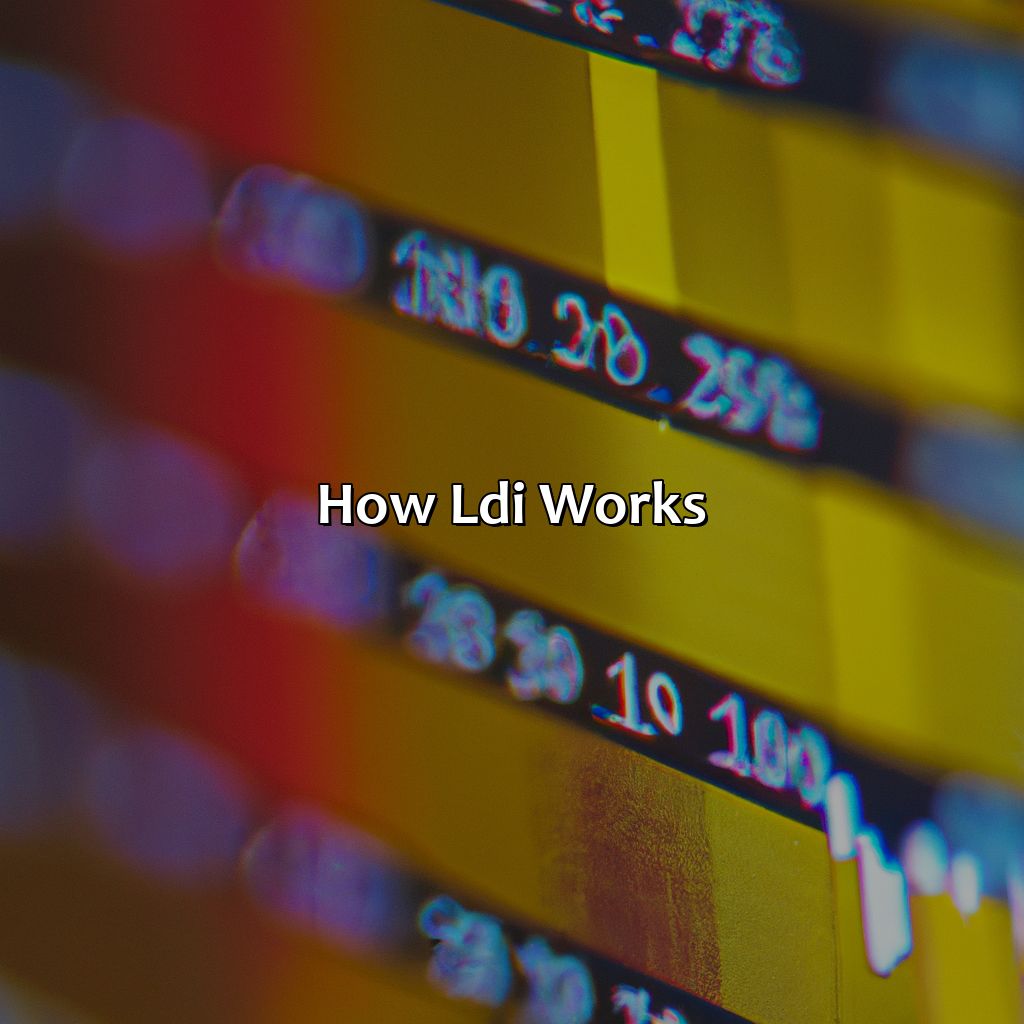
Image credits: retiregenz.com by David Duncun
Liability benchmarking
When developing investment strategies, liability benchmarking can provide critical insight. This involves comparing expected liabilities against available assets to ensure adequate coverage. By identifying the funding needed to meet future obligations, investors can create more targeted approaches and better assess risk. Liability benchmarking is a crucial step in effective liability-driven investment, as it helps determine asset allocation, return goals, and monitoring metrics.
To conduct liability benchmarking effectively, investors need accurate liability projections based on actuarial data and assumptions about future economic trends. They must specify the duration, size, and timing of liabilities accurately to determine appropriate asset and portfolio selection. Unlike traditional investment strategies that focus on maximizing returns or minimizing risk in isolation from liabilities, liability-driven investments use a broader perspective that simultaneously considers asset returns relative to projected liabilities.
Liability benchmarking also takes into account interest rate risk since liabilities are often related to inflation-protected bonds with fixed coupon payments. By matching investment portfolios with anticipated cash flows and durations of upcoming pension payments, investors can optimize yield while mitigating risks such as liquidity risk or credit risk.
Liability benchmarking has gained popularity recently because of its proven effectiveness in managing long-term pension obligations. In 2012 alone, institutional funds worth over $65 billion adopted this methodology for their investments globally. Even though liability benchmarks are complex tools requiring significant data analysis expertise and knowledge of regulatory frameworks and accounting rules; however, implementing them produces better diversification across multiple asset classes while allowing investors to balance their assets efficiently against current and emerging liabilities.
Is diversification just a fancy word for ‘don’t put all your eggs in one basket’ or is it actually helpful? Asking for a friend who invested all their money in Beanie Babies.
Asset allocation
Asset allocation must be based on the investor’s time horizon, risk tolerance and investment objectives. Shorter term investments may require more fixed income securities while longer term investments may lean towards equities. A balanced approach combining both can be considered for a moderate investor.
Placing all your investments in one asset class can lead to higher risk of losses or missed opportunities for growth. Asset allocation is an ongoing process that requires monitoring and rebalancing periodically.
A large pension fund manager had been investing heavily in equities, ignoring the potential risks associated with market volatility. After a difficult year, they re-evaluated their investment strategy and implemented a more balanced approach incorporating fixed income securities resulting in better portfolio performance.
Why worry about liabilities when you can just invest in a drink and forget about them altogether? (Disclaimer: this strategy is not recommended for long-term financial planning).
LDI strategies
Do you want to get clued up on Liability-Driven Investment (LDI) strategies? Full LDI, Partial LDI, and Cashflow-driven LDI all involve matching a portfolio’s assets with future liabilities. This is all about managing risk. Each type of LDI meets different investor and plan needs, helping them to gain better control and a more secure status.
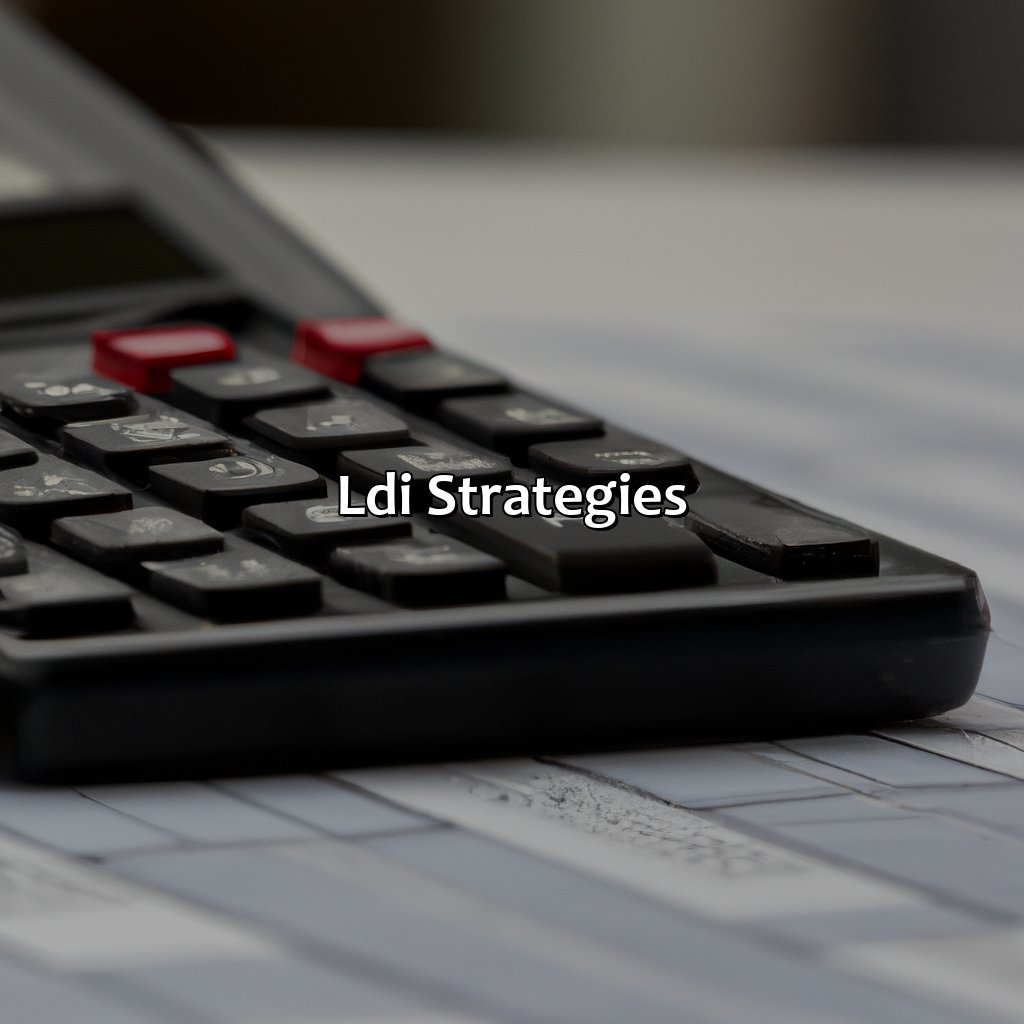
Image credits: retiregenz.com by Adam Jones
Full LDI
The complete implementation of liability-driven investment (LDI) strategies involves engaging in the meticulous management of pension fund assets and liabilities. This approach requires developing a portfolio that hedges against potential risks associated with the liability, including interest rate, inflation, and longevity risk. The full LDI strategy aims to mitigate the mismatch between a plan’s assets and its long-term liabilities proactively.
Accurate estimation of future cash flows is crucial for successful full LDI application since investment allocations aim at providing the exact amount needed to meet future obligations. Thus, pension funds are required to custom tailor investments explicitly designed to match their unique needs closely. A robust LDI strategy scrutinizes all aspects related to pension plans’ unfunded statuses such as rising health care costs or increasing life expectancies.
Unlike traditional asset-oriented strategies solely focused on returns, full LDI aligns investments accurately with expected obligations. As per BlackRock Investment Institute reports, “In 2019, globally over $1 trillion in pensions were managed under an LDI framework that accounted for market volatility.”
Reportedly, industry trends indicate increased adoption of full LDI across all geographies over the past decade.
Partial LDI? Sounds like something your ex would do to avoid commitment.
Partial LDI
A LDI strategy that hedges only a portion of the risk is known as “incomplete liability-driven investment”. This approach partially addresses liabilities through matching illiquid assets or purchasing derivatives. Partial LDI enables greater flexibility, lower costs, and a more conservative risk profile than full LDI. It is an option for pension plans that want to reduce their asset-liability mismatch without completely eliminating higher-yielding, less liquid investments. However, it also has drawbacks in terms of limited downside protection compared to full LDI. Partial LDI requires a careful balance between return optimization and liability hedging.
Partial LDI can be traced back to the mid-2000s when institutional investors began shifting from traditional asset-only strategies to customized investment solutions aimed at managing the specific risks posed by plan liabilities. Initially, partial LDI was viewed with scepticism due to the increased complexity and cost associated with both hedging and bespoke portfolio construction. However, over time it has become an accepted strategy for pension funds globally seeking tailored investment solutions.
Want to feel secure with your cashflow? Try cashflow-driven LDI, because nothing says peace of mind like a plan for every penny.
Cashflow-driven LDI
A popular approach to LDI is cashflow-driven investing. This strategy focuses on meeting short-term funding needs through income-producing investments such as bonds. The strategy aims to reduce a pension fund’s reliance on selling assets when they are out of favour in order to pay for benefits. Instead, it uses the stable cashflows produced by these investments to meet its obligations.
By embracing cashflow-driven LDI, pension funds can align their investment strategy with long-term liabilities without compromising their liquidity requirements. Moreover, this approach can help mitigate risks and improve downside protection since the focus is entirely on generating enough cashflows. By maintaining healthy cashflows, even during market downturns and economic slowdowns, pension funds can ensure sufficient funding for their future liabilities.
While this approach may seem complex and require careful planning, the benefits of effective LDI strategies outweigh the challenges posed by market volatility and other uncertainties that could negatively affect portfolio performance.
To successfully implement this strategy, it’s important to adopt an asset allocation approach that strikes a balance between generating sufficient cashflows without being overly exposed to risks. Additionally, it’s essential to maintain a close watch on changes in both liability projections and market conditions that could lead necessitate modifications in portfolio components. Consistency in these patterns could help alleviate any unanticipated risks from changes in inflation dynamics or interest rates.
Some Facts About Liability Driven Investment (LDI):
- ✅ LDI is an investment strategy designed to match the future cash flows of a pension plan with a portfolio of assets. (Source: Investopedia)
- ✅ The objective of LDI is to reduce the risk of underfunding and minimize the impact of interest rate and market fluctuations on the pension plan. (Source: Pensions & Investments)
- ✅ LDI typically involves investing in fixed-income securities, such as bonds, that closely match the duration and cash flow profile of the pension liabilities. (Source: BlackRock)
- ✅ LDI allows plan sponsors to better manage their pension risk and focus on meeting their funding and liability obligations. (Source: Mercer)
- ✅ LDI is a popular strategy among defined benefit pension plans and has gained traction globally, particularly in the UK and the US. (Source: The Wall Street Journal)
FAQs about What Is Liability Driven Investment?
What is liability driven investment?
Liability driven investment or LDI is an investment strategy that focuses on managing the risk associated with meeting future financial obligations or liabilities. This approach is most commonly used by pension funds and insurance companies to ensure that they have sufficient funds to meet their liabilities as they become due.
How does liability driven investment work?
LDI works by matching the cash flow and duration of assets in a portfolio to the future liabilities of the investor. This means that the portfolio is designed to generate a certain level of cash flow at specific times in the future, so that it can be used to meet the investor’s financial obligations as they come due.
What types of assets are typically used in liability driven investment?
LDI portfolios typically include fixed income assets such as bonds, inflation-linked securities, and interest rate swaps. These assets are chosen for their ability to generate reliable cash flows that match the investor’s future liability payments.
What are the benefits of liability driven investment?
The main benefits of LDI are that it can help investors to manage the risk associated with their future liabilities, and it can help them to achieve more stable investment returns over the long term. This can be particularly important for pension funds and insurance companies, which are typically focused on providing reliable, long-term financial security to their clients.
What are the risks associated with liability driven investment?
The main risk associated with LDI is that it can be difficult to accurately predict future liabilities, particularly for long-term financial obligations such as pension payments. This can make it challenging to design a portfolio that perfectly matches the investor’s future cash flow needs. Additionally, if interest rates rise or fall unexpectedly, it can cause fluctuations in the value of the fixed income assets in the portfolio.
Who should consider using liability driven investment?
LDI is most commonly used by pension funds and insurance companies, which have large future liabilities that they need to manage. However, it may also be appropriate for other types of investors, such as individuals who have a significant future financial obligation, such as a child’s education or a mortgage payment.
